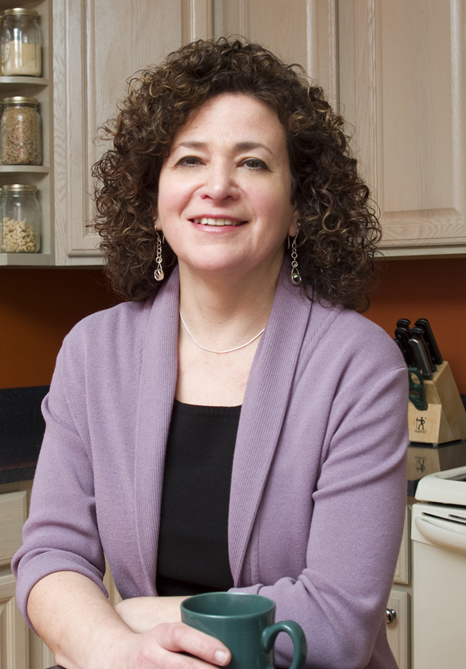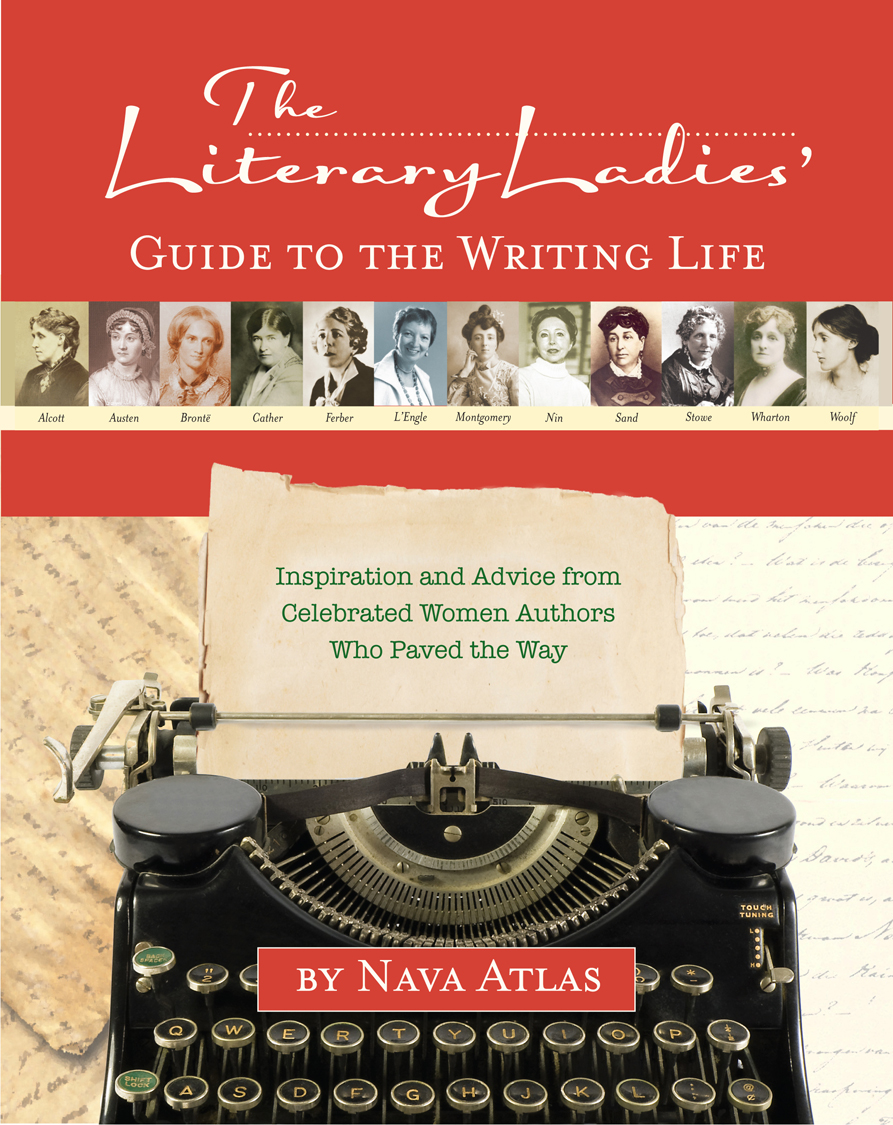Today’s post comes from Nava Atlas, author of the recently published The Literary Ladies Guide to the Writing Life: Inspiration and Advice from Celebrated Authors Who Paved the Way. You can learn more about the book and watch a trailer here.
 Virginia Woolf famously wrote, “A woman must have money and a room of her own if she is to write fiction.” Leaving aside the question of what a woman writes – fiction or nonfiction, prose or poetry, journalism or pithy blog posts – just how important is it to have a room of one’s own?
Virginia Woolf famously wrote, “A woman must have money and a room of her own if she is to write fiction.” Leaving aside the question of what a woman writes – fiction or nonfiction, prose or poetry, journalism or pithy blog posts – just how important is it to have a room of one’s own?
In researching the writing lives of 12 classic women authors for my new book, The Literary Ladies’ Guide to the Writing Life, I was struck by the universality of the issues and struggles the writers experienced. Finding quiet time to write and a modicum of privacy was as great a challenge for 19th-century women, especially those with children, as it is today.
Woolf wasn’t the first to want a private space to write. Harriet Beecher Stowe, best known for the anti-slavery novel Uncle Tom’s Cabin, neatly foreshadowed Woolf’s words in a letter she wrote to her husband. “If I am to write, I must have a room to myself, which shall be my room,” she said. Stowe had seven children (three of whom died, one as a toddler and the others in young adulthood). Although she was responsible for all household duties, she needed to augment the family’s income by writing anything she could get paid for (apparently, co-parenting was not widely practiced in the 19th century).
“All last winter I felt the need of some place were I could go and be quiet and satisfied,” Stowe wrote. Still, she felt guilty spending time apart from her children. “Our children are just coming to the age when everything depends on my efforts … Can I lawfully divide my attention by literary efforts?” she wrote. Stowe’s husband offered little help with the home or children, but he encouraged his wife’s literary efforts, which paid off handsomely, not only in financial success, but with the seismic shift in public opinion on slavery caused by the publication of Uncle Tom’s Cabin. From her letters, it is clear that when it came to privacy and quiet time, Stowe muddled though, snatching bits of tranquility as best she could.
 You needn’t have a passel of kids to feel pressed for the time and privacy to write. L.M. Montgomery, best known for the Anne of Green Gables series, struggled with this issue even before having two sons. As a young working girl in 1910, she wrote in her journal, “I have had a hard time trying to arrange for enough spare minutes to do some writing.” At first, she wrote in the evenings, alone in her room after a day working at a newspaper. “Well, I tried it. I couldn’t string two marketable ideas together,” she wrote.
You needn’t have a passel of kids to feel pressed for the time and privacy to write. L.M. Montgomery, best known for the Anne of Green Gables series, struggled with this issue even before having two sons. As a young working girl in 1910, she wrote in her journal, “I have had a hard time trying to arrange for enough spare minutes to do some writing.” At first, she wrote in the evenings, alone in her room after a day working at a newspaper. “Well, I tried it. I couldn’t string two marketable ideas together,” she wrote.
She tried writing before work, but found she “could not do good work in a chilly room on an empty stomach.” “Now it used to be at home that I thought undisturbed solitude was necessary that the fire of genius might burn. I must be alone and the room must be quiet,” she mused on her dilemma. “It would have been the last thing to enter my imagination that I could ever write anything at all, much less anything of value, in a newspaper office, with … people coming and going and conversing, telephones ringing and machines thumping and dragging overhead.”
The hubbub of the news office seemed most conducive to young Maud Montgomery, who snatched a bit of time here and there between calls and deadlines. “Every morning I write and not bad stuff either,” she wrote.
Who can’t relate to Montgomery’s longing for “enough spare minutes to do some writing,” especially if it’s writing that isn’t compelled to be finished by some real-world deadline? And along with those spare minutes, some sweet solitude.
But let’s rethink the latter. Might finding the time and place to write be easier if total solitude isn’t necessarily the ideal to aspire to? What if, like in Montgomery’s case, a bit of hubbub is more conducive to getting work done?
Now that my kids are grown and I can actually attain that perfect, rapt silence I so longed for once upon a time, ironically, I find I get more work done – and enjoy it more – when I work with my writing partner, a novelist. We work together in a café with just the right amount of background noise and just enough strong coffee. We keep each other focused, and the din precludes the isolated sense of being completely in your own head when alone in “a room of one’s own.” This might be why co-working spaces for writers and specially designated spaces in public libraries are proliferating. In these places, writers come not to discuss work, but actually do work, in grown-up version of parallel play.
Whether in sequestered silence, working in a café or library, with writing friends or scribbling strangers, each of us needs to experiment, like Maud Montgomery did, to find the space that is the best and most efficient for helping the words flow.
Thanks for the insights, Nava–so many famous writers have struggled with this issue, including one of Canada’s most famous exports, short story writer Alice Munro (who devoted an entire story, “The Office,” to the notion). I have moved in the opposite direction from you, it seems–give me total silence in my own office, or give me a botched piece of writing!
My body craves peace on a cellular level, but with two small children, it’s a rarity. I have to be alone, hiding at my desk in my closet, before I even dare try to write more than a sentence on a random post-it.
I imagine come next fall when my youngest starts kindergarten I’ll probably need a little background noise in order to not miss him too much, but for now it’s early morning, hidden away writing before the rest of the family greets the day. Silence rules.
I remember trying to write with a two-year-old on my lap – good times! When my youngest was in preschool and I had two kids in elementary and high school I stopped writing for a time, I just didn’t have the mental capacity, energy, patience or desire to do everything. Once he got a bit older and was more self sufficient I was ready and interested in carving out some writing time for myself again.
Michelle
I know a woman, a freelance writer, who is living with her adult daughter and family. With toddlers underfoot, and limited living space, this woman decided to go outside the box. She rents a 4X6 storage unit in a climate controlled building. The manager built a desk in there out of scrap lumbar and arranged for electricity for lights and a fax/copy machine. This is now her official “office”.
That is pretty extreme, but I bet the rent isn’t as much as it would be if she rented a regular office space. One wonders, though, whether she’d be more comfortable in one of those co-working spaces for writers that are popping up in cities around the country (maybe there wasn’t one in her town).
Thanks for sharing!
Michelle
Hi Michelle,
What an inspirational book! Thanks for sharing.